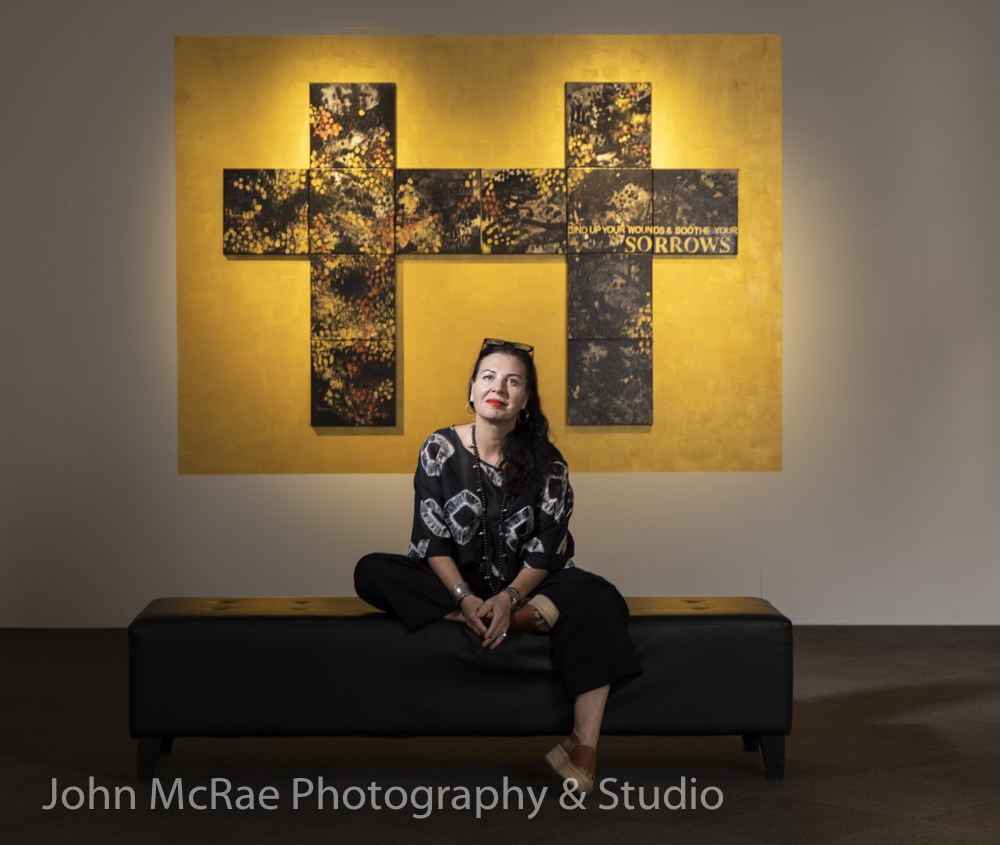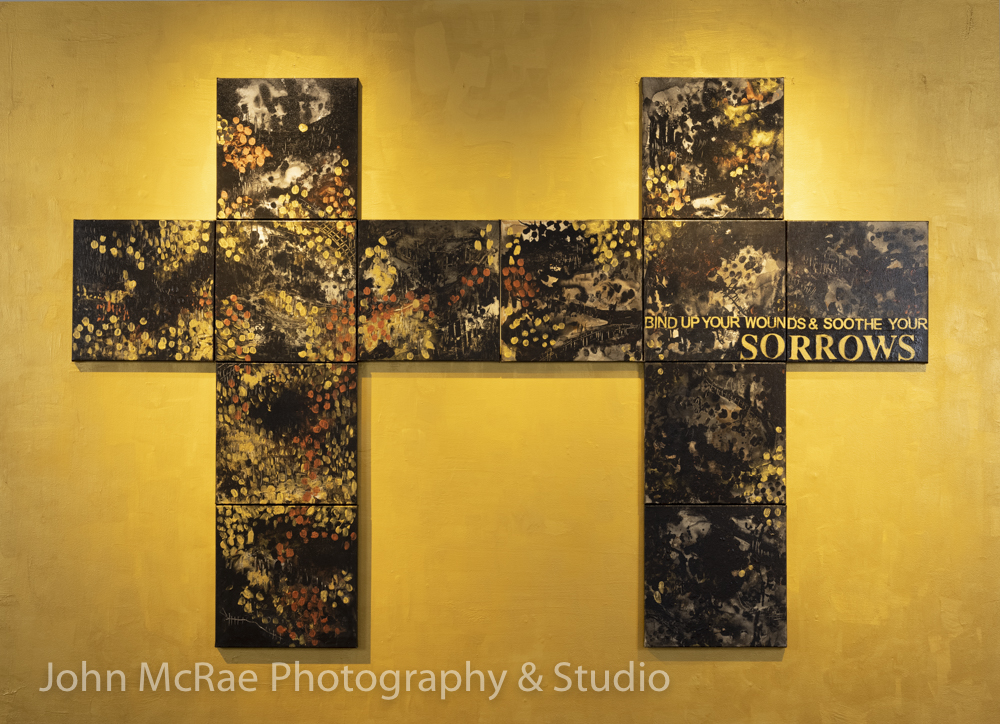
My good friend Maree Azzopardi has a wonderful solo exhibition showing at the Gosford Regional Art Gallery. Maree and I have known each other for many years, both professionally and privately. We have shown our work together many times in group exhibitions across the globe including in New York, Malta and Rome, as well as in galleries here in Australia.
Maree has always impressed me as a really “gutsy” painter and I have long admired her work. If you happen to travel to the Central Coast over the next six weeks (the Fireworks exhibition 29 Oct – 13 Dec, 2022) make sure you visit the Gosford Regional Art Gallery to visit her show.
The following are my photographs of some of Maree’s works from the exhibition, with a text written by the Rome-based curator (and mutual friend), Jonathan Turner.
FIREWORKS

“If fire (…) was taken to be a constituent element of the Universe, is it not because it is an element of human thought, the prime element of reverie?”
Gaston Bachelard, The Psychoanalysis of Fire, 1938.
According to the mid-20th Century French philosopher Gaston Bachelard, the phenomenon of fire is situated at the crossroads of science and poetry. His studies included an approach to the components represented by fire, the libido and flaming passion, while his philosophical response to man’s basic instinct to control fire was his brilliant analysis of the myth of Prometheus, who was punished by the capricious Greek gods for his theft of fire and its subsequent gift to humanity in the form of knowledge and civilisation.
Maree Azzopardi takes Bachelard’s Psychoanalysis of Fire, and reverts back to the aspects of the impulsive, transgressive nature of fire, its ability to cause unintended consequences, the destructive powers of wild-fires and the subsequent joys of rejuvenation. At the Gosford Regional Gallery, her new Fireworks exhibition of paintings, drawings, concertina books, ceramic sculptures and mixed media photographic works assess the complexities of damage and grief associated with fire, but also the healing powers of nature and positive energy. In her work, Azzopardi reaffirms a desire for transformation. She studies the coexistence of life and death, reminiscent of the Greek myth of the phoenix, the immortal bird which regenerates cyclically, or is reborn in a different way. Associated with the sun, the phoenix receives new life by being resurrected from the ashes of its predecessor.
Fire has no form, weight or density, and Azzopardi’s watercolours and canvases reflect this. Like Mother Nature herself, bush-fires are untameable. Soothe Your Sorrows was initially created in response to the Black Summer Fires. The text comes from a late 19th Century diary kept by Tottie Thorburn, an unmarried woman who lived with her sisters in Meroogal House on the south coast of NSW. Tottie was devoted to the Scriptures, and Azzopardi’s work is inspired by her independent, isolated life. In a painting representing fire and the pandemic, Azzopardi uses 12 panels as a sacred number symbolizing the Apocalypse. But all is not lost. Azzopardi depicts both the scorched earth and the regeneration of native wattle.
“So after the fires, I created images using what I found, such as burnt branches used as charcoal and also the burnt bones of animals that I used as drawing tools,” explains the artist. “It became a sort of ritual of helping the scorched earth to heal, to release the spirits of the deceased animals, as well as addressing my own grief at what I had witnessed.”
In her recent work, Azzopardi incorporates a variety of materials including gouache, Sumi and Indian ink, oil stick, sand, flecks of gold-leaf, burnt feathers and rattan matting she has salvaged from discarded cane chairs washed-up on the beach at the high tide mark. Her Wings of Desire series are photographs of dead seabirds printed on linen, with shimmering stitches embroidered in gold thread. One work featuring matted feathers and the gilded skull of a bird is dedicated to the Greek myth of Icarus, the man whose wings melted when he flew too close to the sun, and who fell to the sea and drowned. Meanwhile the shape of the bird skull itself is reminiscent of the beaked masks worn by medieval doctors in Italy to symbolically protect them against the plague, and now worn as traditional costumes during Carnival in Venice. Thus Azzopardi’s Fireworks reference the apocalyptic harbingers of pestilence, famine and war as the most pressing global concerns today, as well as the destruction wrought by floods and the Australian bushfires. Her theme is death heading towards rebirth, strife redeemed through spirituality.
In a nod to the hyper-vigilance of Google Earth (sometimes Azzopardi’s landscapes are even viewed from above), her paintings offer a deconstruction of the contemporary gaze. Her landscapes explore the notions of what is instantly recognizable and what is magnified to the point of abstraction, what is naturalistic and what has been crushed, scratched and blurred. Formal questions centre on empty and filled space, on shadow and light. This is all part of Azzopardi’s questioning on the “exhaustion of images” and the deeper concepts of memory and oblivion.
Jonathan Turner, October 2022.

